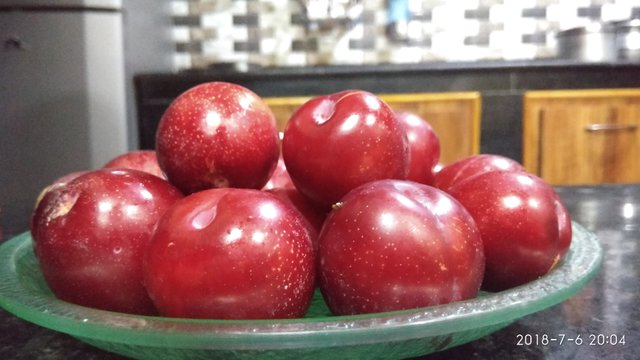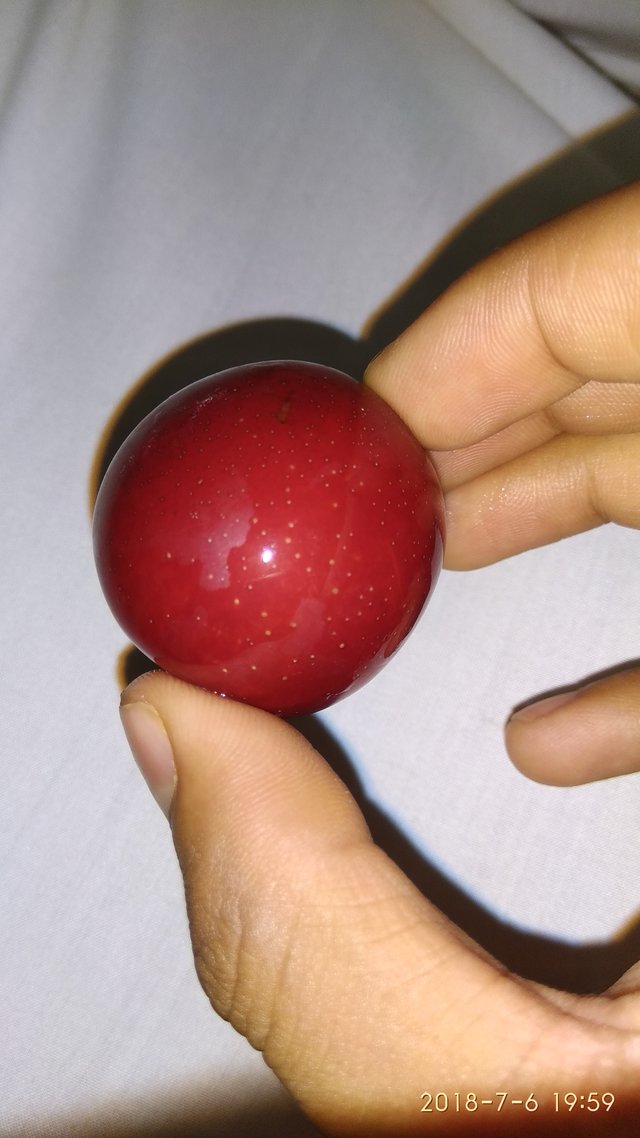PLUM-The Fruit
A plum is a fruit of the subgenus Prunus of the genus Prunus. The subgenus is distinguished from other subgenera (peaches, cherries, bird cherries, etc.) in the shoots having terminal bud and solitary side buds (not clustered), the flowers in groups of one to five together on short stems, and the fruit having a groove running down one side and a smooth stone

Did you know that plum remains have been found in Neolithic Age archaeological sites along with olives, grapes and figs? In fact, plums may have been one of the first fruits domesticated by humans!
Plum Nutrition Facts
One cup of sliced plum has about:
76 calories
zero grams fat
19 grams carbohydrate
2 grams dietary fiber
16 grams sugar
1 gram protein
15 milligrams vitamin C (26 percent DV)
10 micrograms vitamin K (13 percent DV)
569 international units vitamin A (11 percent DV)
0.01 milligrams thiamin (3 percent DV)
0.01 milligrams riboflavin (3 percent DV)
0.7 milligrams niacin (3 percent DV)
0.4 milligrams vitamin E (2 percent DV)
0.01 milligrams vitamin B6 (2 percent DV)
8.3 micrograms folate (2 percent DV)
0.2 milligrams pantothenic acid (2 percent DV)
259 milligrams potassium (7 percent DV)
0.1 milligrams copper (5 percent DV)
0.1 milligrams manganese (4 percent DV)
11 milligrams magnesium (3 percent DV)
26 milligrams phosphorus (3 percent DV)
0.3 milligrams iron (2 percent DV)

Health benefits of plum: 10 reasons to eat more plums
- Improves the health of your heart
- Relieves constipation
- Protects against cancer
- Improves circulation of blood
- Lowers cholesterol levels
- Good for your skin
- Good for your bones
- Reduces the appearance of scars
- Treats hair fall and promotes hair growth
- Improves immunity
Types of Plums
About 20 varieties dominate the commercial supply of plums, and most originated in either Asia or Europe.
California French plums (d’Agen):
Casselman:
Damson:
El Dorado:
Elephant Heart:
Empress:
Freedom:
Friar:
Greengage:
Kelsey:
Laroda:
Nubiana:
Plumcot:
Pluot:
Prune plums (Italian prune plums):
Santa Rosa: